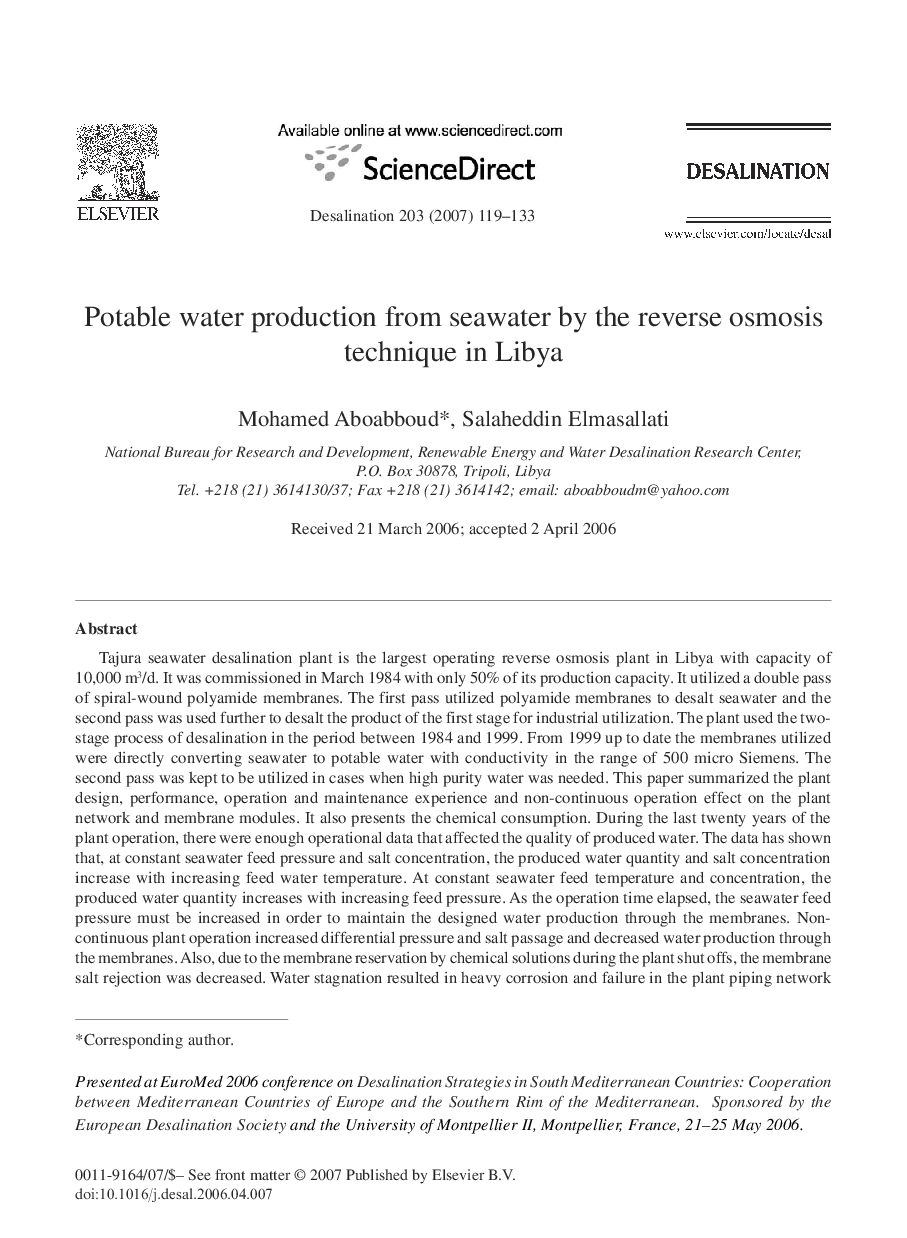| کد مقاله | کد نشریه | سال انتشار | مقاله انگلیسی | نسخه تمام متن |
|---|---|---|---|---|
| 628186 | 1455487 | 2007 | 15 صفحه PDF | دانلود رایگان |

Tajura seawater desalination plant is the largest operating reverse osmosis plant in Libya with capacity of 10,000 m3/d. It was commissioned in March 1984 with only 50% of its production capacity. It utilized a double pass of spiral-wound polyamide membranes. The first pass utilized polyamide membranes to desalt seawater and the second pass was used further to desalt the product of the first stage for industrial utilization. The plant used the twostage process of desalination in the period between 1984 and 1999. From 1999 up to date the membranes utilized were directly converting seawater to potable water with conductivity in the range of 500 micro Siemens. The second pass was kept to be utilized in cases when high purity water was needed. This paper summarized the plant design, performance, operation and maintenance experience and non-continuous operation effect on the plant network and membrane modules. It also presents the chemical consumption. During the last twenty years of the plant operation, there were enough operational data that affected the quality of produced water. The data has shown that, at constant seawater feed pressure and salt concentration, the produced water quantity and salt concentration increase with increasing feed water temperature. At constant seawater feed temperature and concentration, the produced water quantity increases with increasing feed pressure. As the operation time elapsed, the seawater feed pressure must be increased in order to maintain the designed water production through the membranes. Noncontinuous plant operation increased differential pressure and salt passage and decreased water production through the membranes. Also, due to the membrane reservation by chemical solutions during the plant shut offs, the membrane salt rejection was decreased. Water stagnation resulted in heavy corrosion and failure in the plant piping network during plant shut offs. This caused maintenance of concentrate pipes, valves and pumps more frequent than that if the plant was in continuous operation. Operating the reverse osmosis desalination plant at only small percent of its design capacity also increases the produced water price several times, the price that would have been if the plant was operated at full design capacity. In spite of the adverse operational conditions of the plant regarding operation and shut offs time, the plant has proven its reliability in terms of meeting membrane life time expectancy, mechanical equipment, instrumentation and control system.
Journal: Desalination - Volume 203, Issues 1–3, 5 February 2007, Pages 119-133